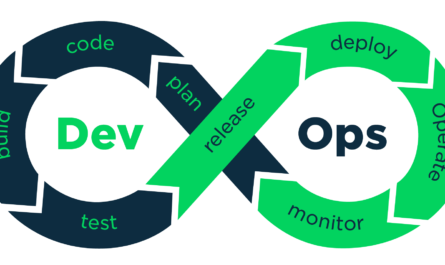Segmenting Infrastructure to Composable Infrastructure
We’re accustomed to thinking of infrastructure as fixed, rigid systems. Compute, storage and networking are purchased, deployed and dedicated to specific applications that they won’t deviate from. This model served organizations well for decades but has increasingly shown its limitations in the face of rapid technology change, business model transformation and new user expectations. Programmable infrastructure promises to fundamentally change this by making resources independent and freely composable according to real-time business demands.
Disaggregating Resources to Maximize Utilization
Composability begins with “disaggregating” core Composable Infrastructure building blocks that were previously bundled together. Compute, storage, and acceleration resources are acquired independently and pooled. This allows them to be allocated on demand to any workload rather than remaining staticly assigned. For example, extra CPU cores can be dynamically added to a database node experiencing a spike in queries. Additional flash storage can boost the performance of a file server. By treating resources as independent services that can be combined as needed, programmable infrastructure maximizes hardware utilization across all workloads. IT becomes far more responsive to varying requirements while reducing hardware expenses.
Resource Abstraction Simplifies Operations
Composability is realized through abstraction — presenting infrastructure resources through software-defined pools and services rather than direct hardware access. This separation of “physical” and “logical” infrastructure radically simplifies operations. Admin teams no longer need to provision, monitor and maintain a maze of discrete server and storage systems. They work entirely through the abstraction layer which automatically handles all resource packaging and delivery. IT therefore gains a single control point for all infrastructure through intuitive cloud-like interfaces and APIs. Management complexity plummets as systems self-compose and recompose to meet application service level objectives.
Elastic Scalability Meets Changing Demand
Enterprise environments are compounding in scale and diversity as digital transformation accelerates across all industries. Applications now span from monolithic software to microservices and serverless functions. Usage patterns have also become unpredictable with the growth of IoT, edge computing, AI inference and more. Programmable infrastructure delivers the perfect agility and scalability for such dynamic modern IT landscapes. Resources no longer have fixed limits — they expand and contract seamlessly on demand. Workloads automatically obtain more resources during high usage then release them when finished, paying only for what was consumed. This elasticity aligns capacity perfectly with variable demand profiles to optimize costs at any time.
Paving the Way for Composable Infrastructure
By liberating infrastructure from rigid constraints, composability ultimately fuels greater pace of innovation. Developers gain instant, automated access to all required resources for new applications and prototypes. They compose sandbox environments on-the-fly without operational complexity or delays. Furthermore, production resources can be non-disruptively “recomposed” as code evolves through DevOps pipelines. Composable Infrastructure lets organizations experiment more freely and roll out changes incrementally, safely learning and improving in production. It also accelerates new workloads like AI which thrive on the ability to rapidly scale compute and CUDA GPU instances for model training. Most broadly, programmable infrastructure establishes the foundation for continuous innovation in services, business models and customer experience over the long run.
Ensuring Seamless Change amid Disruption
As the only constant in today’s digital economy, composability has become mission-critical for weathering industry-wide turmoil. It safeguards organizations from supply chain shocks by preventing infrastructure from being a single point of failure. Resources can simply be reconstituted from disaggregated pools onto alternative hardware when needed. Composability likewise guards against unforeseen changes in usage patterns and revenue models. IT remains responsive and capable of immediately rebalancing as business needs shift in volatile times. Perhaps most importantly, programmable infrastructure delivers future-proof agility. Companies retain the flexibility to innovate their way to new opportunities during periods of disruption rather than facing technology lock-in and paralysis. Composability is thus indispensable insurance for enterprises confronting accelerating rates of market transition.
Programmable infrastructure is the logical evolution of shared, pooled and automated resource delivery. By separating hardware from logical services, it strikes the ultimate balance of flexibility, scalability and efficiency demanded in today’s digital economy. Composability liberates businesses and developers to get the exact resources they need on their own terms and fuels innovation at an optimal pace. Going forward, composable architectures will define how mainstream IT infrastructure operates to align with new modes of app development, deployment and consumption. Those that embrace the agile, cloud-like models it enables will gain far-reaching competitive advantages in responding to constant technological change and business disruption
*Note:
1. Source: Coherent Market Insights, Public Source, Desk Research
2. We have leveraged AI tools to mine information and compile it.
About Author - Money Singh
Money Singh is a seasoned content writer with over four years of experience in the market research sector. Her expertise spans various industries, including food and beverages, biotechnology, chemicals and materials, defense and aerospace, consumer goods, etc. LinkedIn Profile




